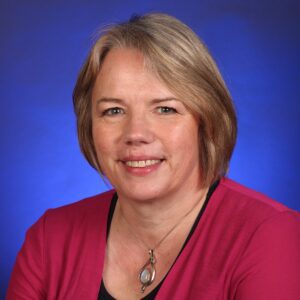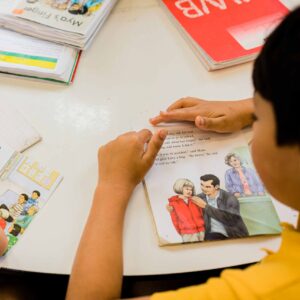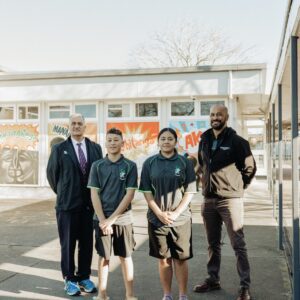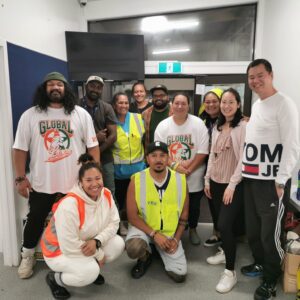

Sally Peters
Working together effectively and consistently
Children do not exist in isolation; their lives are embedded in families, communities and societies. Nested within these communities are the schools and early childhood education (ECE) services children attend.
When I was a child, my experience was of little interaction between schools and their communities. Looking back, this seems due to the culture of practice within schools, more than the school gates. In the intervening years, writers like Bronfenbrenner1 have drawn our attention to the complex influences of environments – both immediate and more remote – on development and the value of creating meaningful reciprocal connections between the different groups and settings that children are part of.
Today we see attention to the role of communities reflected in our curriculum documents. “Family and Community/Whānau Tangata” is one of the principles of the early childhood curriculum, Te Whāriki, along with the expectation that each ECE service will use the curriculum “as a basis for weaving with children, parents and whānau its own local curriculum of valued learning, taking into consideration also the aspirations and learning priorities of hapū, iwi and community”.
For kura and schools, Te Marautanga notes that for learners to succeed, the school, the home, hapū, iwi and community must work together effectively
and consistently, while a central principle of the New Zealand Curriculum is Community Engagement”, connecting with the students’ wider lives and gaining support of families, whānau and communities. The importance of community weaves through each document, with important implications for pedagogy.
Teachers often take the lead in initiating connections and building communities for learning.
Teachers often take the lead in initiating connections and building communities for learning. In a Centre of Innovation research project2, teachers at Mangere Bridge Kindergarten documented their steps in creating a community approach to starting school. They found that projects and activities were a foundation for collaboration, and that the most successful projects – those that brought more people on board – were “mutually interesting”. Over time, momentum increased, and strategic community partners were drawn in. At first, the ECE teachers initiated each activity, but eventually other members of the community began to propose and lead projects.
Working together on meaningful projects was also a feature of the Learning journeys from early childhood into school project. Teachers collaboratively planned, implemented and evaluated a range of action research “mini projects”, providing opportunities for shared reflections on practice and a collective approach to supporting children’s learning. Rather than attempting to find a “one-size-fits-all” formula, the process of trying “what works here” was key. Powerful benefits came from spiralling between action and evaluation, which often sparked a new direction or more nuanced approach.
The idea of “negotiated spaces” helps with the sometimes challenging work of bringing together different and sometimes conflicting world views. A recent report, Bridging Cultural Perspectives, expands on this idea and provides steps to implement “respectful and negotiated conversations”.
Working together effectively across different sectors and with family, whānau and other groups to enhance children’s learning may require courage and persistence, but as many teachers have found, a community approach can have valuable benefits for learners and learning.
Associate Professor Sally Peters is Head of School at Te Kura Toi Tangata School of Education, University of Waikato
1. e.g. Bronfenbrenner, U. & Morris, P. A. (1997). The ecology of developmental processes. In W. Damon & R. M. Lerner (Eds.) Handbook of child psychology: Vol. 1. Theoretical models of human development (5th ed., pp. 993-1029). New York: John Wiley.
2. Hartley, C., Rogers, P., Smith, J., Peters, S. & Carr, M. (2012). Crossing the border: a community negotiates the transition from early childhood to primary school. Wellington: NZCER.
Related Posts

It’s Time to End Streaming in Aotearoa
All students deserve opportunities to achieve. The move to end streaming is a way of challenging socio-economic inequalities and the institutionalised racism that continues to persist in our teaching practices.

“We were refugees” Displaced by the cyclone
While many schools and centres were damaged by Cyclone Gabrielle, a few were forced into long-term closure with staff and children having to re-establish elsewhere. Ako talked to kaiako from three different institutions that found new premises, or were taken in by a neighbouring school or centre.

The power of collective action
During the recent weather events schools have emerged as first responders to crisis in many close-knit communities. Where local authorities failed, groups of educators joined together as hubs of help. Ako spoke with one group of schools in Tāmaki Makaurau about their joint efforts in the face of crisis.

Surviving Gabrielle
In times of tragedy and crisis, schools are often the glue that holds communities together. At the close of term one 2023, Ako visited one small school in Hawke’s Bay to learn how it became a regional hub after Cyclone Gabrielle.